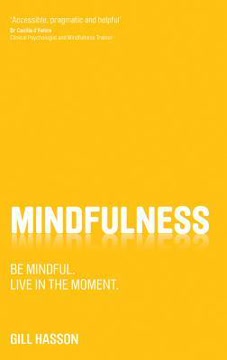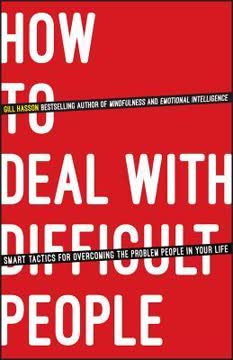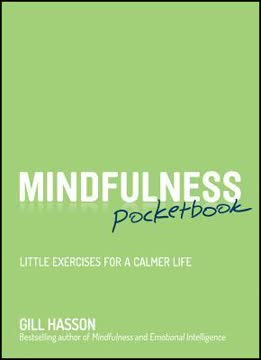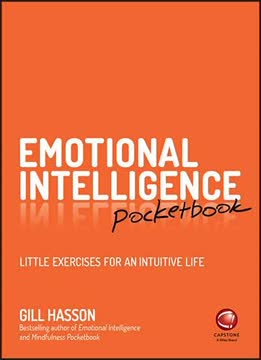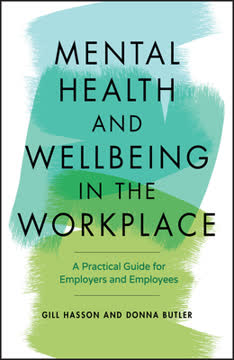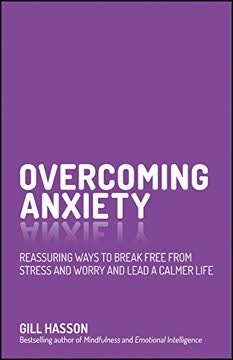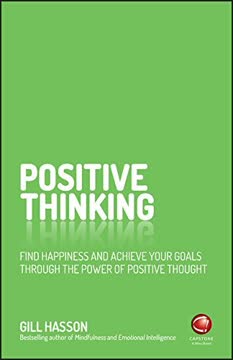Key Takeaways
1. Mindfulness is about living in the present moment
"Life unfolds in the present. As George Harrison once said: 'It's being here now that's important. There's no past and there's no future … all there is ever, is the now.'"
Essence of mindfulness. Mindfulness is the practice of bringing awareness to the present moment, without judgment. It involves acknowledging thoughts and feelings as they arise, but not getting caught up in them. This practice helps reduce stress, anxiety, and depression by freeing us from dwelling on the past or worrying about the future.
Benefits of mindfulness:
- Increased focus and concentration
- Reduced stress and anxiety
- Improved emotional regulation
- Enhanced self-awareness
- Better decision-making skills
- Increased empathy and compassion
Practical application. Incorporate mindfulness into daily life by focusing on sensory experiences, such as the taste of food, the feeling of breathing, or the sounds in your environment. Start with short periods of mindful awareness and gradually increase the duration as you become more comfortable with the practice.
2. Recognize and break free from mind traps
"Too often, your thoughts can trap you; trap you in the past and trap you in the future."
Common mind traps. Our minds often fall into patterns of thinking that pull us away from the present moment. These traps include catastrophizing, jumping to conclusions, tunnel thinking, and dwelling on past events or future worries. Recognizing these patterns is the first step towards breaking free from them.
Strategies to overcome mind traps:
- Practice awareness: Notice when your mind is engaged in unhelpful thinking patterns
- Question your thoughts: Challenge negative assumptions and look for alternative perspectives
- Use mindfulness techniques: Bring your attention back to the present moment
- Reframe situations: Look for positive aspects or learning opportunities in challenging situations
Beginner's mind. Approach situations with a fresh perspective, letting go of preconceived notions and past experiences. This allows for new insights and reduces the likelihood of getting stuck in habitual thought patterns.
3. Cultivate awareness of thoughts, emotions, and physical sensations
"Mindfulness enables you to experience and appreciate your life instead of rushing through it, constantly trying to be somewhere else."
Holistic awareness. Mindfulness involves paying attention to all aspects of our experience: thoughts, emotions, and physical sensations. This comprehensive awareness helps us understand ourselves better and respond more effectively to life's challenges.
Techniques for cultivating awareness:
- Body scan meditation: Systematically focus on different parts of your body
- Mindful journaling: Write down thoughts and feelings without judgment
- Emotion labeling: Identify and name emotions as they arise
- Sensory focus exercises: Pay attention to specific senses (sight, sound, touch, taste, smell)
Non-judgmental observation. Practice observing your thoughts, emotions, and sensations without trying to change or suppress them. This non-reactive stance allows for greater self-understanding and emotional regulation.
4. Practice mindful breathing to anchor yourself in the present
"Your breathing can help to slow everything down, bring you into the present moment and give you the chance to be aware of what you think and feel and what you are doing and going to do."
Power of breath. Mindful breathing is a simple yet powerful technique for grounding yourself in the present moment. It acts as an anchor, helping to calm the mind and body, reducing stress and anxiety.
Mindful breathing techniques:
- Basic breath awareness: Focus on the natural rhythm of your breath
- Counted breathing: Count each breath cycle to maintain focus
- Alternate nostril breathing: Balance the nervous system by alternating breath between nostrils
- Box breathing: Inhale, hold, exhale, and hold for equal counts
Practical application. Use mindful breathing as a quick reset throughout the day, especially during stressful moments or when transitioning between activities. Set reminders to take brief breathing breaks to maintain present-moment awareness.
5. Transform everyday activities into mindfulness opportunities
"Mindfulness is most easily practised by turning everyday activities into opportunities for mindfulness."
Mindful daily life. Every moment offers an opportunity to practice mindfulness. By bringing awareness to routine activities, we can cultivate a more present and engaged way of living.
Examples of mindful activities:
- Mindful eating: Pay attention to flavors, textures, and the act of nourishing your body
- Mindful walking: Focus on the sensations of movement and your surroundings
- Mindful chores: Bring full attention to tasks like washing dishes or folding laundry
- Mindful communication: Listen attentively and speak with intention
Single-tasking. Focus on one activity at a time, giving it your full attention. This practice enhances the quality of your experience and improves overall productivity and satisfaction.
6. Use mindfulness to manage difficult emotions
"Accepting your emotions does not require you to analyze what, how and why you feel like you do. It means simply understanding that you do feel like you do, whatever the reason."
Emotional regulation. Mindfulness can help manage challenging emotions by creating space between the emotion and our reaction to it. This allows for more skillful responses to difficult situations.
Mindful approaches to difficult emotions:
- Acknowledge and accept: Recognize emotions without judgment
- Observe with curiosity: Notice physical sensations associated with emotions
- Use metaphors: Visualize emotions as waves or clouds passing by
- Practice self-compassion: Treat yourself with kindness during emotional turmoil
RAIN technique:
- Recognize the emotion
- Allow it to be present
- Investigate with interest and care
- Non-identification (realizing the emotion is not your entire identity)
7. Set mindful goals and build willpower
"Problem solving involves evaluating a situation, coming up with steps to deal with it, and then putting the plan into action, now, in the present."
Mindful goal-setting. Approach goals with present-moment awareness, focusing on the process rather than just the outcome. This helps maintain motivation and enjoyment throughout the journey.
Steps for mindful goal-setting:
- Set positive, specific goals
- Break larger goals into smaller, manageable steps
- Focus on the present actions needed to progress
- Regularly review and adjust goals as needed
Willpower cultivation. Treat willpower as a muscle that can be strengthened through practice. Use mindfulness techniques to become aware of impulses and make conscious choices aligned with your goals.
Willpower-building strategies:
- Practice small acts of self-control daily
- Use mindful breathing to pause before acting on impulses
- Visualize successful outcomes
- Celebrate small victories along the way
8. Apply mindfulness to improve relationships and communication
"Mindful listening involves reflecting what the other person said but using your own words and phrases."
Mindful communication. Practicing mindfulness in interactions with others can lead to deeper understanding, empathy, and more satisfying relationships. It involves being fully present and attentive during conversations.
Key aspects of mindful communication:
- Active listening: Give full attention to the speaker without planning your response
- Non-judgmental attitude: Suspend judgment and remain open to different perspectives
- Empathy: Try to understand the other person's feelings and point of view
- Thoughtful responses: Pause before speaking to ensure your words are intentional
Conflict resolution. Use mindfulness techniques to manage emotions during conflicts, allowing for more constructive and compassionate resolutions.
9. Harness mindfulness for self-esteem and confidence
"Confidence is not about what you can or can't do, it's what you think or believe you can or can't do."
Mindful self-awareness. Develop a non-judgmental awareness of your thoughts, feelings, and behaviors to build a more accurate and compassionate self-image. This awareness can help challenge negative self-talk and boost self-esteem.
Techniques for building self-esteem:
- Practice self-compassion: Treat yourself with the same kindness you'd offer a friend
- Challenge negative self-talk: Question the validity of self-critical thoughts
- Focus on strengths: Regularly acknowledge and appreciate your positive qualities
- Set and achieve small goals: Build confidence through consistent accomplishments
Mindful self-acceptance. Cultivate acceptance of yourself as you are in the present moment, while still working towards personal growth and improvement.
10. Utilize mindfulness techniques in professional settings
"Mindfulness is the ultimate mobile device; you can use it anywhere, anytime, unobtrusively."
Workplace mindfulness. Incorporating mindfulness practices into your work life can improve focus, reduce stress, and enhance overall job performance and satisfaction.
Mindfulness applications in the workplace:
- Mindful meetings: Start meetings with a brief mindfulness exercise
- Focused work sessions: Use techniques like the Pomodoro method with mindful breaks
- Stress management: Practice quick mindfulness exercises during high-pressure moments
- Decision-making: Use mindful awareness to make more balanced and thoughtful choices
Professional development. Use mindfulness to enhance skills such as active listening, emotional intelligence, and adaptability, which are valuable in any professional setting.
Last updated:
FAQ
What is "Mindfulness" by Gill Hasson about?
- Practical guide to mindfulness: "Mindfulness" by Gill Hasson is a practical, accessible guide to understanding and applying mindfulness in everyday life, focusing on informal mindfulness rather than formal meditation.
- Living in the present: The book emphasizes the importance of being present, aware, and engaged with the current moment, rather than being caught up in thoughts about the past or future.
- Tools for daily challenges: It provides tools, exercises, and real-life examples to help readers manage emotions, improve relationships, boost self-esteem, and handle work situations mindfully.
- Two-part structure: The book is divided into two parts—understanding mindfulness and putting it into practice in specific life situations.
Why should I read "Mindfulness" by Gill Hasson?
- Accessible and practical: The book demystifies mindfulness, making it approachable for beginners and those who want to integrate mindfulness into daily routines without complex meditation.
- Addresses common struggles: It tackles real-life issues like stress, anxiety, anger, guilt, self-doubt, and loneliness, offering mindful solutions for each.
- Evidence-based techniques: Hasson includes research-backed methods and relatable exercises, making the advice credible and actionable.
- Encourages positive change: Readers are guided to develop healthier thought patterns, emotional resilience, and more fulfilling relationships through mindfulness.
What are the key takeaways from "Mindfulness" by Gill Hasson?
- Mindfulness is everyday awareness: Mindfulness means being fully present and engaged in the moment, with acceptance and without judgment.
- Mind traps hinder presence: Recognizing and escaping common mind traps (like catastrophizing, tunnel thinking, and blame) is essential for mindful living.
- Emotions are guides, not enemies: All emotions, even difficult ones, have a positive intent and can be managed mindfully through acceptance and awareness.
- Mindfulness is dynamic: Aspects like awareness, acceptance, non-judgment, letting go, focus, and beginner’s mind interact to support mindful living.
- Practical application: Mindfulness can be applied to managing emotions, building self-esteem, achieving goals, improving relationships, and handling work challenges.
How does Gill Hasson define mindfulness in "Mindfulness"?
- Present-moment awareness: Mindfulness is defined as being aware and engaged with what’s happening right now, without judgment or distraction.
- Not about emptying the mind: Hasson clarifies that mindfulness isn’t about suppressing thoughts or achieving an “empty mind,” but about noticing thoughts and feelings as they arise.
- Two forms: She distinguishes between formal mindfulness (meditation) and informal mindfulness (bringing awareness to daily activities), focusing on the latter.
- Acceptance and non-judgment: Mindfulness involves accepting experiences as they are, observing them without labeling them as good or bad.
What are the main "mind traps" discussed in "Mindfulness" by Gill Hasson?
- Catastrophizing: Imagining worst-case scenarios and letting future fears dominate the present.
- Jumping to conclusions: Making judgments without sufficient evidence, often based on past experiences.
- Tunnel thinking: Focusing narrowly on one outcome or perspective, missing other possibilities.
- Confirmation and conformity traps: Seeking information that supports existing beliefs or simply going along with others’ views.
- Sunk costs and blame: Sticking with unhelpful situations due to past investment, or blaming others for current problems.
How does "Mindfulness" by Gill Hasson suggest changing unhelpful thought patterns?
- Awareness is the first step: Becoming conscious of automatic, habitual thoughts is essential for change.
- Break routines: Deliberately altering small daily habits exposes the brain to new stimuli and helps create new neural pathways.
- Beginner’s mind: Approaching familiar situations as if for the first time encourages openness and curiosity.
- Embrace setbacks: Recognize that change is a process with stages, including relapse, and use setbacks as learning opportunities.
What practical exercises and techniques does "Mindfulness" by Gill Hasson recommend?
- Mindful breathing: Simple breathing exercises to anchor attention in the present and calm the mind.
- Everyday mindfulness: Bringing awareness to routine activities like eating, washing dishes, or walking, using all senses.
- Writing exercises: Keeping a “thinking diary” or writing down worries to increase self-awareness and release mental clutter.
- Flow activities: Engaging in hobbies or tasks that fully absorb attention, such as sports, music, or creative pursuits.
How does "Mindfulness" by Gill Hasson address managing difficult emotions like anger, anxiety, and guilt?
- Acknowledge and accept: Recognize emotions as they arise without judgment or suppression.
- Mindful response: Use techniques like mindful breathing, pausing, and reframing to respond rather than react impulsively.
- Focus on the present: Shift attention from past regrets or future worries to what can be done now.
- Learn and move on: Accept responsibility, learn from mistakes, and let go of unhelpful guilt or resentment.
What role do self-esteem and confidence play in "Mindfulness" by Gill Hasson, and how can mindfulness help?
- Thoughts shape self-esteem: Negative self-talk and judgments about past or future undermine confidence.
- Mindful acceptance: Embracing mistakes and learning from them, rather than dwelling on them, builds self-acceptance.
- Focus on strengths: Engaging in activities that bring satisfaction and “flow” enhances self-esteem.
- Social connection: Mindfulness helps manage loneliness by fostering connection through shared interests and contribution.
How does "Mindfulness" by Gill Hasson apply mindfulness to motivation, goals, and willpower?
- Goals in the present: Setting and working toward goals is a present-moment activity, not just future-oriented.
- Positive framing: State goals positively and break them into achievable short-term steps.
- Willpower as a muscle: Willpower is limited but can be strengthened through small, consistent acts of self-control.
- Surfing the urge: Mindfully observing and accepting urges (e.g., cravings) helps resist unhelpful impulses.
How does "Mindfulness" by Gill Hasson improve relationships and communication with others?
- Mindful listening: Reflective listening techniques help give full attention, minimize misunderstandings, and build empathy.
- Managing criticism: Mindfulness enables calm, constructive responses to criticism, focusing on understanding rather than reacting.
- Forgiveness and letting go: Mindful acceptance helps release resentment and move forward after being wronged.
- Persuasion and motivation: Mindful communication involves clarity, timing, and genuine engagement with others’ perspectives.
What are the best quotes from "Mindfulness" by Gill Hasson and what do they mean?
- “The present moment is, in fact, life itself!” – Emphasizes that life only happens in the now, not in memories or future plans.
- “Mindfulness is the ultimate mobile device; you can use it anywhere, anytime, unobtrusively.” (Sharon Salzberg) – Highlights the portability and practicality of mindfulness.
- “Whatever the present moment contains, accept it as if you had chosen it.” (Eckhart Tolle) – Encourages radical acceptance of current circumstances to reduce suffering.
- “Resentment is like drinking poison and waiting for it to kill your enemy.” (Nelson Mandela) – Illustrates the self-destructive nature of holding onto anger.
- “Nothing happens next. This is it.” – Reminds us that mindfulness is not about achieving a future state, but about being fully present now.
Review Summary
Mindfulness receives mixed reviews, with an average rating of 3.66/5. Readers appreciate its practical advice on living in the present moment and applying mindfulness to daily life. Many find it calming and insightful, with useful techniques for managing stress and improving focus. However, some criticize the book for being repetitive, lacking depth, or containing common-sense information. Despite these drawbacks, most reviewers consider it a good introduction to mindfulness, praising its accessible writing style and potential to positively impact readers' lives.
Similar Books

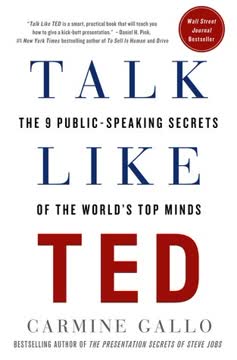
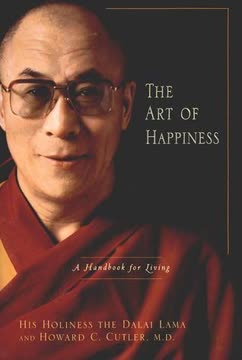
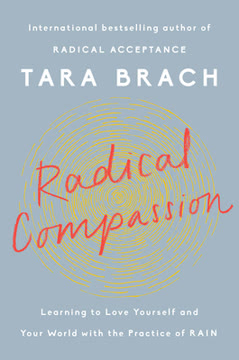
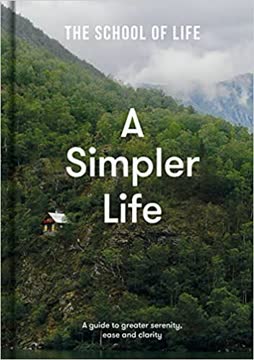
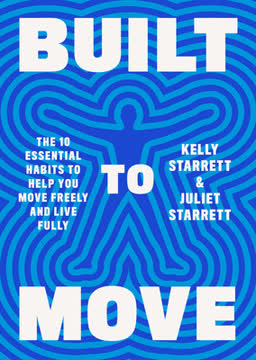

Download PDF
Download EPUB
.epub digital book format is ideal for reading ebooks on phones, tablets, and e-readers.
